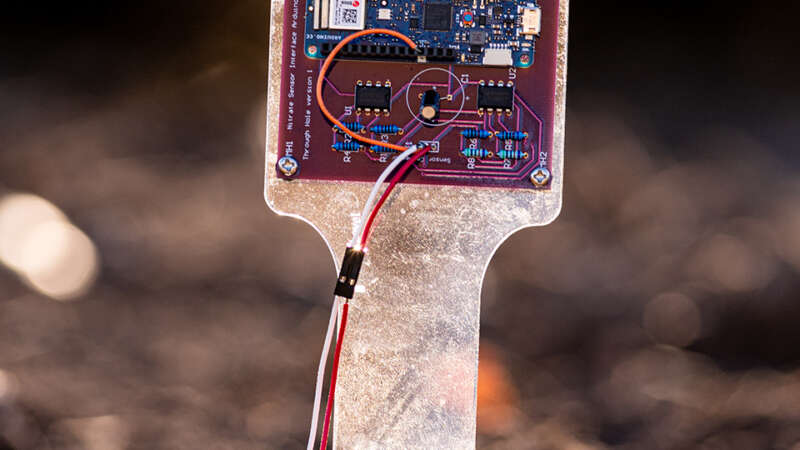K-State psychology professor’s unique research leads fight against cyberbullying.
Bullies no longer need to crowd around lockers; they have screens. Dr. Chris Barlett, a K-State graduate and associate professor, has spent years researching the factors that influence aggressive behaviors in digital spaces. Driven by his own childhood experiences and his role as a father, his findings have formed the Barlett Gentile Cyberbullying Model — and fueled his mission to delete cyberbullying for good.
What does your learning model explain?
The learning model takes the two factors that make cyberbullying unique, anonymity and size, and shows how people develop positive attitudes toward cyberbullying.
In the traditional bullying world, bullies normally are stronger, bigger and have a higher social status. Online, a kid who might normally be a victim can target the strongest kid in school and not get caught.
My model is a big cycle. It starts with the two factors I mentioned before — anonymity and the belief that muscularity doesn’t matter. Those beliefs lead to attitudes, which then lead to behavior. Once people engage in cyberbullying behavior, they relearn they’re anonymous, which restarts the cycle.
How is your research unique?
What makes my model unique is that it is specific to the online experience. Other research models will take general bullying theories and apply them to cyberbullying. But if I replace the word “cyberbullying” with the word “traditional bullying” in this type of model, it still makes sense. In mine, the word “traditional bullying” doesn’t work.
This allows us to answer cool questions like what role cyberbullying attitudes have, how they’re developed, what age they begin and more.
It’s also informed the intervention that I’m working on called “You’re Not Anonymous,” where we teach people they’re not really anonymous online. If you decrease anonymity, then the model starts to crumble and hurts the development of cyberbullying, which ultimately is the goal.
What sparked your interest in studying cyberbullying?
I’m an aggression scholar at heart, so I wanted to look at behaviors under the antisocial behavior umbrella that have the intention to harm.
When I first started researching cyberbullying, I was in graduate school, and most research already out there was very descriptive and separated out things like sex and age differences.
I was very theoretically driven, so I wanted to know the why behind people who cyberbully. I started looking in the literature to figure out what makes the online bullying experience different than in-person bullying, and that’s what started my current research.
Now I focus on three main areas under the umbrella term of antisocial behavior. Cyberbullying, which is intentionally harming someone repeatedly on technology; cyber-racism, which is online hate specific to race and prejudice; and then cyber-intimate-partner violence.
What does a typical day researching look like for you?
A lot of my days are spent sitting down and figuring out the relationships between certain variables and cyberbullying through analyzing data. On that side of things, I’d describe our research as a well-oiled machine. We’re constantly collecting data and coming up with new projects so when we’re analyzing Project A, we’re running project B and planning project C and keeping our work constantly in motion.
Working with my research assistants to plan how to conduct our research ethically is the most time-consuming part. Conducting research with kids is hard, because we need to be careful about what we ask them, their age and more. We also have to be careful not to ask questions about specific media platforms because in a year from now, those may not be relevant.
What do you wish more people knew about cyberbullying?
Most people assume that cyber bullying is happening in middle schools and high schools the most, and after that, it’s over. That’s a myth.
We have data that suggests that after high school, it doesn’t stop. College students cyberbully. Young emerging adults cyberbully. It does start to drop off a little bit when you get to older adulthood, but the idea that cyberbullying stops after high school is wrong.
It’s something that affects everyone throughout the course of their life. At least that’s what our data suggests.
How has your research been shaped by being at K-State?
When this K-State job came open three years ago, I was very happy that I was selected to take this job. My wife is an alumnus too, and we love being back.
The resources and the research environment that K-State provides really is what propelled my work. If I have a stat question I don’t know, I can just run down the hall and collaborate with someone else. If I want to look at the neuroscience side of things, we have a ton of resources like eye trackers and EEGs. Coming back and working with K-State students has also been awesome. They really care about this problem, and it’s great to see them continue to develop their research skills.



